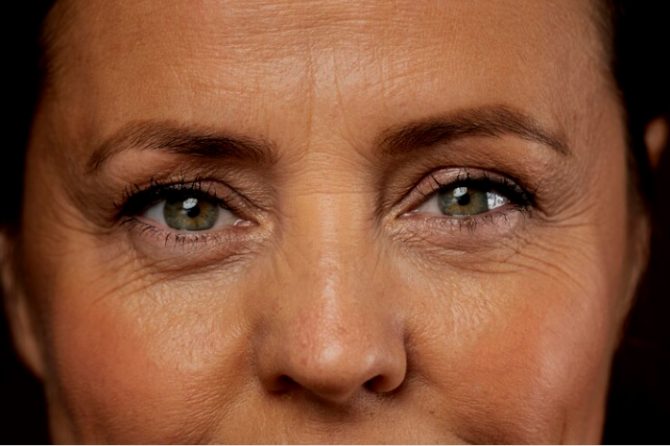
Wrinkles
Some scientists now believe that wrinkles drive the aging process
The human face is a roadmap of aging. Creases, folds, and wrinkles emerge as time marches on. While lines and wrinkles clearly signal advancing age, new evidence suggests they may also actively drive the aging process overall.
Youthful skin is supple and smooth, stretched taut like a balloon at a party. But years of joy and worry etch their signature. Skin slackens, sags, and wrinkles begin tracing the path of a life lived.
The face, our most exposed skin, bears the brunt of intrinsic changes that thin, weaken, and loosen with age. Collagen and elastin decline; moisture wanes. Meanwhile extrinsic factors like sun, smoking, and stress put further stress on face skin as do our expressive faces—furrowing brows, squinting eyes, pursing lips—all etch temporary lines that deepen with time.
Fine lines first appear as early as our 20s. Horizontal brow creases often lead the path of aging. Crow’s feet, laugh lines, and frown lines typically follow in our 30s. By our later years, wrinkles criss-cross the face in multitudes, some over 2 millimeters deep. Even sleeping positions, pressing the face nightly into a pillow, can further instigate wrinkles over time.
Beyond expressive lines are micro-wrinkles reflecting each face’s unique topography. As skin loses elasticity, this intricate landscape becomes more pronounced. “It gets accentuated with aging,” says biochemist Michael Sherratt at the annual meeting of the British Association of Dermatologists.
Examined microscopically, wrinkled skin differs little from smooth skin. But broader changes underlie those wrinkles. Thinning epidermis, weakened dermis, reduced moisture, and a fragmented bond between layers diminish structural integrity.
Intriguingly, wrinkled skin also harbors more senescent “zombie” cells. These dysfunctional cells drive inflammation, implicated in hypertension, diabetes, and cancer. Some researchers now wonder if wrinkle-ridden skin fuels cognitive decline.
Sunlight rapidly accelerates facial skin aging, degrading proteins and spurring wrinkle formation. Smoking further robs the skin of collagen and elasticity. Studies of twins reveal stark differences when one smokes and the other doesn’t. Toxins assault the skin; vertical lip lines often betray a smoking habit.
But wrinkles also reflect deflation beneath the surface. Loss of underlying fat pads, muscle tone, and bone density furthers the collapse. Gravity has its way with skin’s weakened moorings. “Facial aging involves the skin,” says Dr. Rachel Watson from the A*Star Skin Research Labs and Skin Research Institute of Singapore, “but also makes changes to the muscles, bones, and fats holding it up.”
In wrinkles, some see not just symptoms, but drivers of body-wide aging. Creasing skin may point to system-wide deterioration. The wisdom etched on our faces may reveal deeper truths within.
If you are concerned about wrinkles and the effects of the sun you can find a list of English-speaking healthcare providers in the ESHA Spain Business directory
Leave a reply




Leave a reply